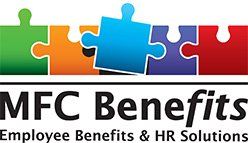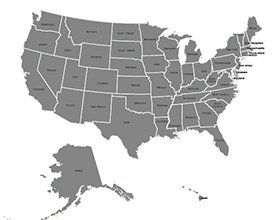PROVIDING TAILORED BENEFIT SOLUTIONS SINCE 1986
GROUP PRODUCTS
In our highly competitive economy, being able to offer your employees exceptional benefit packages is a key component in good management. Let MFC Benefits
create the perfect customized package for your company.
Learn More
BENEFIT SERVICES
From informational seminars to programs tailored to your company's needs, we offer a wide range of benefit services. Let us help you provide your staff with the benefits they want and need.
Learn More
ABOUT US
The secret to our success is our team of professional benefits advisors and service representatives. Call us today at 248-663-4765 and we'll design, implement, and service an exclusive benefit package for your business.
Learn More
MISSION STATEMENT
Designing, implementing, and servicing exclusive benefit packages for you and your employees.
LATEST MEDIA

Learn more about IRS releasing Health FSA, qualified transportation limits for 2026 and deadline for updating HIPAA Privacy Notices. IRS RELEASES HEALTH FSA AND QUALIFIED TRANSPORTATION LIMITS FOR 2026 On Oct. 9, 2025, the IRS released Revenue Procedure 2025-32 (Rev. Proc. 25-32), which includes 2026’s inflation-adjusted limits for health flexible spending accounts (FSAs). For plan years beginning in 2026, the adjusted dollar limit on employees’ pre-tax contributions to health FSAs increases to $3,400 . This is a $100 increase from the 2025 limit of $3,300. As background, the Affordable Care Act (ACA) imposes a dollar limit on employees’ salary reduction contributions to health FSAs. This limit started at $2,500 for plan years beginning on or after Jan. 1, 2013, and has been adjusted for inflation for subsequent plan years. Employers should ensure their health FSAs will not allow employees to make pre-tax contributions over $3,400 for the 2026 plan year. As an exception to the use-or-lose rule, employers with health FSAs may allow employees to carry over a certain amount of funds remaining at the end of a plan year to reimburse eligible expenses incurred in the plan year immediately following. The maximum carryover amount is adjusted annually for inflation. For 2026, Rev. Proc. 2532 increases the maximum carryover limit to $680 (from $660 for 2025). In addition, Rev. Proc. 25-32 includes cost-of-living adjustments for qualified transportation fringe benefits for 2026. Federal tax law allows employers to offer qualified transportation benefit programs to their employees on a tax-free basis, subject to a maximum monthly amount. Both employee pre-tax salary deferrals and employer-paid benefits, if any, count toward the maximum amount. For 2026, the combined monthly limit for transportation in a commuter highway vehicle and a transit pass increases to $340 , up from $325 in 2025. The monthly limit in 2026 for qualified parking also increases to $340 from $325. DEADLINE FOR UPDATING HIPAA PRIVACY NOTICES IS APPROACHING The HIPAA Privacy Rule generally requires covered entities (health plans, health care providers and health care clearinghouses) to provide individuals with a Notice of Privacy Practices (or Privacy Notice) to ensure they understand how their protected health information (PHI) may be used and disclosed, as well as their rights with respect to PHI. A final rule issued by the U.S. Department of Health and Human Services (HHS) in April 2024 requires covered entities to update their Privacy Notices if they receive or maintain patient records regarding substance use disorder (SUD) treatment provided by a federally assisted treatment program (i.e., a “Part 2 program”). The deadline for updating Privacy Notices for the additional privacy protections for Part 2 program records is Feb. 16, 2026 . Self-insured health plans must maintain and provide their own Privacy Notice at enrollment time, when there is a material change and upon request. Fully insured health plans that do not have access to PHI (other than enrollment and summary health information) are not required to maintain or provide a Privacy Notice. Fully insured health plans with access to PHI must maintain a Privacy Notice and provide it upon request. Employers that maintain Privacy Notices for their health plans should update them with the changes to SUD treatment records by Feb. 16, 2026. Employers with self-insured health plans should also distribute their updated Privacy Notices by this deadline. It is uncertain if HHS will update its model privacy notices to incorporate the new requirements before the compliance deadline. Provided to you by MFC Benefits, LLC © 2025 Zywave, Inc. All rights reserved Download the PDF copy here. Link: http://chrome-extension://efaidnbmnnnibpcajpcglclefindmkaj/https://content.zywave.com/file/b6f7a224-b3a3-4409-a8f2-953f0994d66a/Benefits%20Buzz%20Newsletter%20January%202024.docx Link: http://chrome-extension://efaidnbmnnnibpcajpcglclefindmkaj/https://content.zywave.com/file/b6f7a224-b3a3-4409-a8f2-953f0994d66a/Benefits%20Buzz%20Newsletter%20January%202024.docx

Learn more about flu season, fast walking, and stocking a nutritious kitchen. WHAT TO KNOW ABOUT THIS FLU SEASON The influenza (flu) season in the United States lasts from October through May, with peak flu activity between December and March. The U.S. Centers for Disease Control and Prevention (CDC) estimates that 47 million to 82 million flu illnesses occurred during the 2024-25 season. Data suggested that flu activity was at its highest level in more than 15 years. Flu season in the Southern Hemisphere often indicates what’s to come in the United States. Data revealed higher hospitalizations during the 2025 flu season in the Southern Hemisphere. With the potential for this year’s flu season to be severe in the United States, vaccination remains the most effective way to prevent the flu, especially severe disease and hospitalization. How to Stay Healthy The flu can cause serious complications for people of any age, but children and older adults are especially vulnerable. To help keep your household healthy this flu season, consider these tips: • Get vaccinated. The CDC recommends that nearly everyone aged 6 months and older get a flu shot every year. • Avoid close contact with people who are sick and stay away from others when you feel unwell. Flu, cold and COVID-19 symptoms are similar, so doctors say it’s best to get tested to determine what you have. • Wash your hands often using soap and warm water. If those are unavailable, use an alcohol based hand sanitizer. • Cover your mouth and nose when coughing or sneezing. • Get seven to nine hours of quality sleep each night to boost your immune system. • Exercise regularly to strengthen your body and make it more resilient against infections. • Stay hydrated and eat a balanced diet. Experts recommend getting vaccinated against the flu by the end of October, so don’t delay getting your shot. Contact your doctor today to learn more. THE BENEFITS OF FAST WALKING While it’s recommended that people commit to 150 minutes of moderate activity per week to notice sufficient health benefits, a new study published in the American Journal of Preventive Medicine found that fast walking for just 15 minutes daily could have the same benefits. Study participants who fast walked for at least 15 minutes every day saw a nearly 20% reduction in premature death compared with a 4% reduction among participants who walked slowly for a total of more than three hours each day. Generally, you can tell you’re fast walking when you can talk but not sing. Remember to maintain good walking form by standing tall with your shoulders back and swinging your arms (in opposition to your foot movement). If you want to take it one step further, try nasal breathing (inhale and exhale through your nose) to help regulate blood pressure while walking. In addition to the study’s findings, consider the following benefits of walking, regardless of speed: • Weight maintenance • Reduced body fat • Increased cardiovascular fitness • Improved endurance • Higher energy levels • Better mood, memory and sleep • Strengthened immune system • Decreased stress To learn more about incorporating walking into your routine, talk to your doctor and discuss what works best for you. STOCKING A NUTRITIOUS KITCHEN You don’t need to master the art of meal planning to eat well during the week. It can be as simple as stocking your kitchen with mealtime building blocks. By keeping a well-rounded selection of pantry, fridge and freezer staples on hand, you can create balanced meals in minutes and avoid the temptation of less nutritious options. Consider the following nutritious items: • Canned chickpeas can easily be added to soups or mashed with seasonings for extra protein and fiber. • Chicken breast is a great protein to build a meal around. You could make pasta, soups, casseroles, sandwiches and more. • Extra-firm tofu is full of plant-based protein and calcium. Its neutral flavor makes it great for stir-fries and curries. • Quinoa or lentils are versatile options to round off meals. They are packed with fiber and protein. • Whole-wheat spaghetti is a great last-minute meal idea. It has a sizable dose of fiber and helps reduce cholesterol. • Frozen spinach is easily used in egg dishes, pasta and smoothies. It’s also packed with four times the nutrients of fresh spinach. By stocking your kitchen with nutritious staples, you’ll always have the tools to build meals that nourish your body and fit your lifestyle. This article is intended for informational purposes only and is not intended to be exhaustive, nor should any discussion or opinions be construed as professional advice. Readers should contact a health professional for appropriate advice. © 2025 Zywave, Inc. All rights reserved. Download the PDF copy here.
Happy Customer Reviews
Memberships










